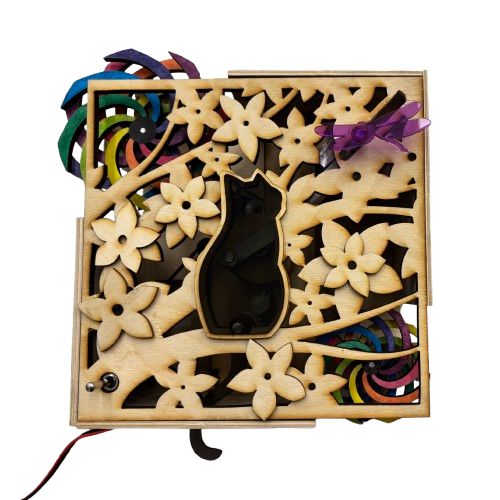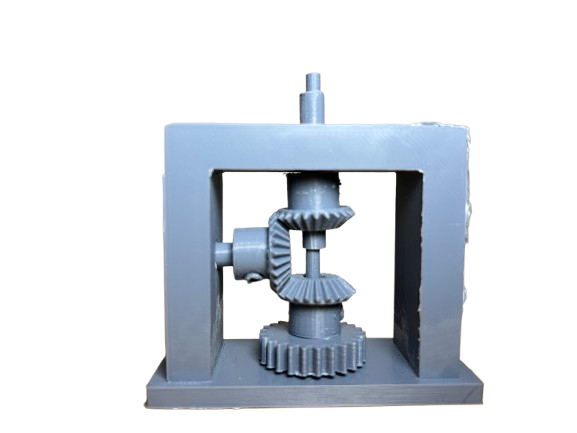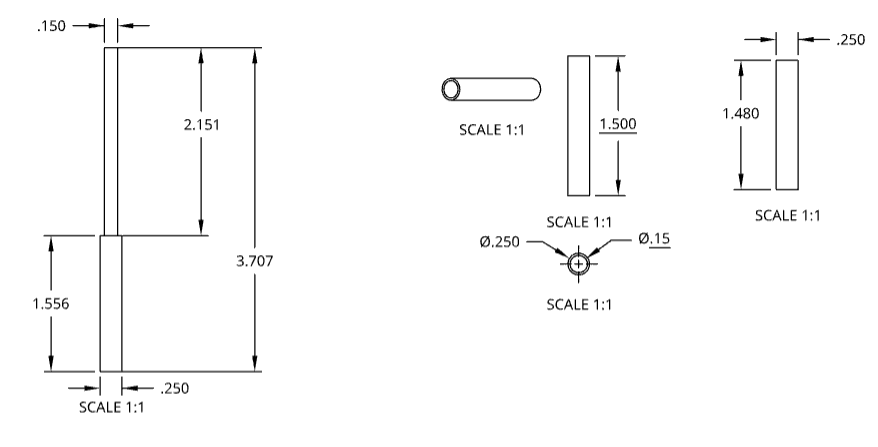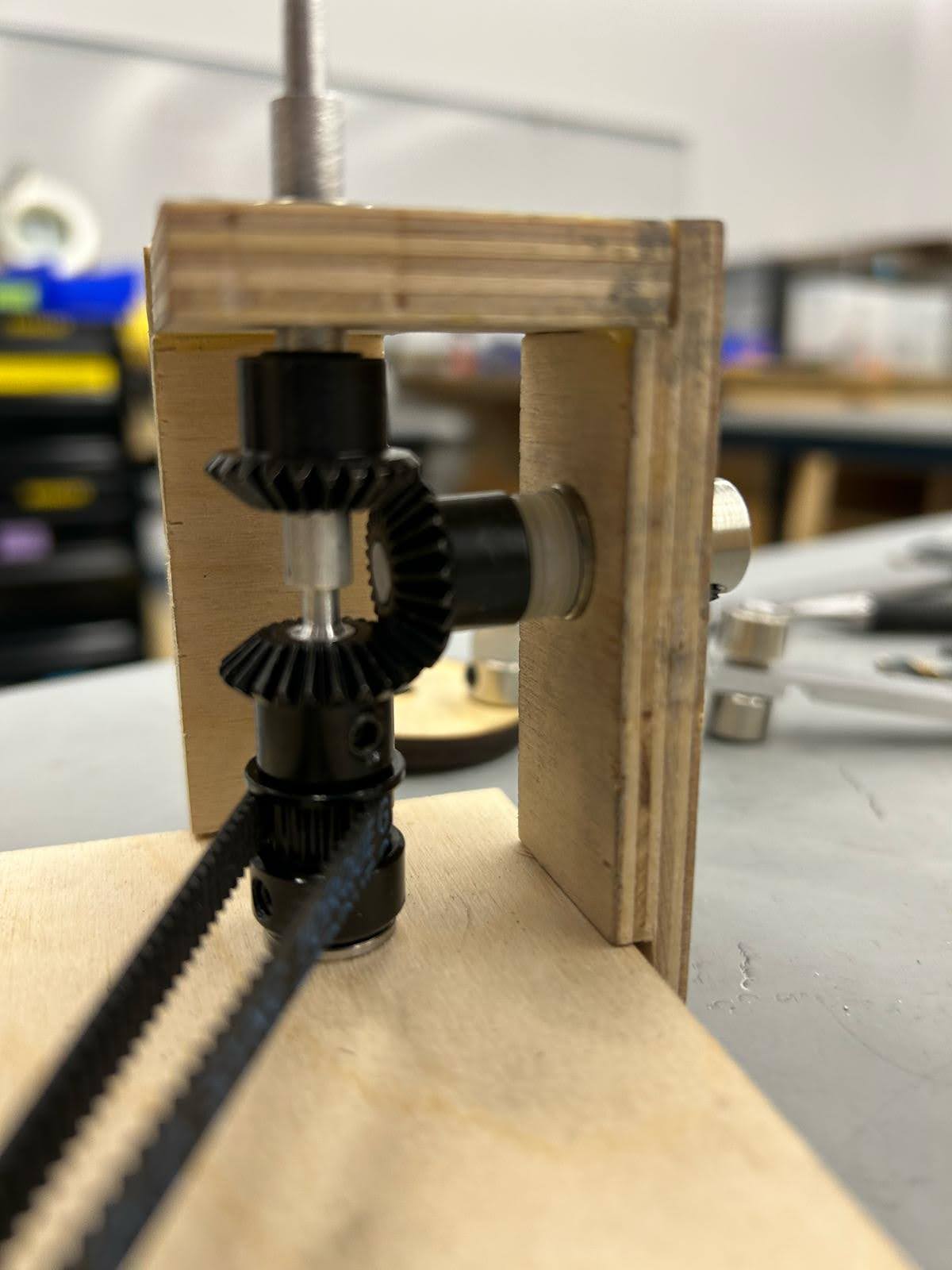Skills: OnShape, Lathe, 3D Printing
For a Mechanical Prototyping and Design course, I was tasked to design a visually engaging kinetic wall sculpture of the theme “Spring”. The project included size constraints and required the incorporation of three separate mechanisms, at least one rotational-to-rotational and one rotational-to-translational, driven by a 25 RPM DC motor and integrated with a belt-driven system. The final kinetic sculpture features a cat in a tree with flowers and a dragonfly. The sculpture features 3 main mechanisms including a bevel gear assembly, a partial gear assembly, and a slider crank mechanism. The motion created by these mechanisms are spinning flowers, a swishing tail, and a moving dragonfly respectively.

Final Kinetic Sculpture
In this project, I focused on developing and manufacturing the bevel gear assembly. This assembly is designed to turn two vertically stacked flowers in the opposite direction at the same speed. In order to achieve this, I designed a 3 bevel gear assembly that utilizes custom-designed axles to allow the flower axles to share the same vertical space while rotating in opposite directions.

Bevel gear CAD

3D Printed Prototype
I lathed custom axles capable of intersecting, enabling the following configuration: the bottom axle connects to the belt-driven bottom bevel gear and rotated the top flower, while the second axle fits around the first one and connects to the top bevel gear, which rotates in the opposite direction via the middle bevel gear, driving the bottom flower.

Custom axel dimensions and lathe instructions

Final bevel gear assembly
Through this project, I learned how to integrate multiple different mechanical systems into one cohesive system. Additionally, I learned how to use a lathe, improved my skills at designing mechanical systems in CAD, and learned how to coordinate system integration in a team environment. From my failures, I gained an appreciation for the importance of designing for assembly. Due to oversights and reliance on press fits I had to spend a long time during assembly sanding parts down in order to achieve the proper fit. This experience emphasized the need to account for manufacturing tolerances and ease of assembly in the design phase.